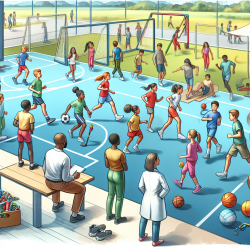Introduction
Physical activity (PA) is crucial for the healthy development of children and adolescents. Despite its benefits, a significant number of Canadian youth do not meet the recommended 60 minutes of moderate-to-vigorous physical activity (MVPA) daily. School-based programs, such as intramurals, present valuable opportunities to promote PA among youth. A recent study published in BMC Public Health titled "Examining if changes in gender-specific and co-ed intramural programs affect youth physical activity over time: a natural experiment evaluation using school- and student-level data from the COMPASS study" explores the impact of these programs on youth PA over time.
Understanding the Study
The study utilized data from the COMPASS study, which collected information from secondary schools in Ontario over three years. It examined how changes in gender-specific and co-ed intramurals affected youth MVPA. The study found that while participation in intramural, varsity, and community sports was positively associated with youth MVPA, changes in gender-specific and co-ed intramurals were not significantly associated with youth MVPA in the subsequent years.
Key Findings
- Participation in intramurals, varsity, and community sports is significantly associated with increased MVPA among youth.
- Changes in gender-specific and co-ed intramurals did not significantly impact youth MVPA in the immediate following years.
- Adding gender-specific intramurals may have a more substantial impact on female MVPA, although further research is needed.
Implications for Practitioners
For practitioners in schools and organizations like TinyEYE, these findings highlight the importance of maintaining a diverse range of physical activity programs. While the immediate impact of changing intramural formats may not be significant, offering a variety of inclusive and accessible programs can foster a supportive environment for PA. Here are some actionable insights:
- Continue to offer a variety of intramural and varsity sports to encourage broad participation.
- Consider implementing gender-specific intramurals to potentially increase female participation and MVPA.
- Focus on creating inclusive environments that encourage participation from all students, regardless of skill level.
Encouraging Further Research
The study suggests that further research is needed to explore the potential benefits of gender-specific intramurals, particularly for female students. Practitioners are encouraged to engage in or support research efforts that examine the long-term effects of these programs on youth PA. By contributing to the body of evidence, practitioners can help shape effective strategies for promoting PA among youth.
Conclusion
While changes in intramural formats alone may not significantly increase youth PA, maintaining a diverse and inclusive range of programs is crucial. Gender-specific intramurals, in particular, may offer a supportive environment that encourages female participation. As practitioners, it's essential to continue exploring and implementing strategies that foster active lifestyles among youth.
To read the original research paper, please follow this link: Examining if changes in gender-specific and co-ed intramural programs affect youth physical activity over time: a natural experiment evaluation using school- and student-level data from the COMPASS study.










